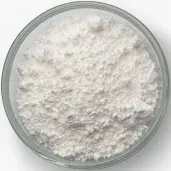
preservatives used in biscuits
The Role of Preservatives in Biscuit Production
In the world of baked goods, biscuits have carved out a unique niche, celebrated for their delightful crunch and diverse flavors. However, a less glamorous aspect of biscuit production is the use of preservatives. Preservatives are substances added to food products to extend their shelf life, prevent spoilage, and maintain optimal taste and texture. In this article, we will explore the various types of preservatives commonly used in biscuits and their significance in the baking industry.
Understanding Preservatives
Preservatives are categorized into two main types natural and artificial. Natural preservatives, derived from plant or animal sources, are gaining popularity due to the growing demand for clean labels and healthier eating options. Common natural preservatives include salt, sugar, vinegar, and certain essential oils. On the other hand, artificial preservatives, synthesized in laboratories, are frequently used because they are often more effective and cost-efficient.
Common Preservatives in Biscuits
1. Sodium Benzoate This is one of the most widely used preservatives in biscuits. It is effective against yeast, mold, and some bacteria. The FDA recognizes sodium benzoate as safe when used in regulated amounts. It helps maintain the freshness of biscuits, preventing them from going stale prematurely.
2. Calcium Propionate Often used in bread and bakery products, calcium propionate is also found in biscuits. It inhibits the growth of mold and certain bacteria, thereby prolonging the product's shelf life. It is a naturally occurring compound that is considered safe for consumption.
3. Potassium Sorbate This preservative is commonly used to prevent the growth of molds and yeasts in many food products, including biscuits. It is effective at low concentrations and is recognized as safe by various health regulations.
preservatives used in biscuits

4. BHT (Butylated Hydroxytoluene) This artificial antioxidant is used to prevent the fats in biscuits from becoming rancid. Rancidity not only affects the flavor but also the safety of the product. BHT is effective in preserving the quality of biscuits that contain higher fat content.
5. Sorbic Acid Commonly used in various food products, sorbic acid is effective against molds and yeasts. It is often included in the ingredient list of sweet biscuits and assures consumers of the product's longevity.
The Importance of Preservatives
The primary reason for incorporating preservatives in biscuits is to ensure their safety and longevity. Without these additives, biscuits can quickly become stale or moldy, resulting in food wastage. Additionally, preservatives help maintain the texture and taste of biscuits over time. For manufacturers, these additives are crucial for quality control and consistency, allowing them to meet consumer expectations and maintain their brand reputation.
Consumer Awareness and Preferences
With the rise of health-conscious consumers, there is a growing demand for products with fewer artificial additives. Many manufacturers are responding by developing biscuits with natural preservatives or reformulating existing products to incorporate more wholesome ingredients. This shift reflects a broader trend in the food industry towards transparency and clean labeling.
Conclusion
In summary, preservatives play a vital role in the production of biscuits, ensuring their safety and extending their shelf life. While traditional artificial preservatives still dominate the market, the rise of natural alternatives signifies a change in consumer preferences. As the food industry evolves, manufacturers must balance the need for preservation with the demand for healthier, more transparent products. Ultimately, understanding the role of preservatives helps consumers make informed choices about the snacks they enjoy.
-
Sodium Dichloroisocyanurate Safety Handling ProtocolsNewsJul.29,2025
-
Mining Chemicals for Copper Extraction Processes GuideNewsJul.29,2025
-
Fertilizer for Sale Shipping and Storage TipsNewsJul.29,2025
-
Dimethyl Disulfide as Sulfurizing AgentNewsJul.29,2025
-
Benzotriazole Safety Data Handling and Storage GuidelinesNewsJul.29,2025
-
Ammonium Bicarbonate Safety Handling Storage GuidelinesNewsJul.29,2025
-
The Transformative Role Of Trichloroisocyanuric Acid in Water TreatmentNewsJul.23,2025
Hebei Tenger Chemical Technology Co., Ltd. focuses on the chemical industry and is committed to the export service of chemical raw materials.
-

view more DiethanolisopropanolamineIn the ever-growing field of chemical solutions, diethanolisopropanolamine (DEIPA) stands out as a versatile and important compound. Due to its unique chemical structure and properties, DEIPA is of interest to various industries including construction, personal care, and agriculture. -

view more TriisopropanolamineTriisopropanolamine (TIPA) alkanol amine substance, is a kind of alcohol amine compound with amino and alcohol hydroxyl, and because of its molecules contains both amino and hydroxyl. -

view more Tetramethyl Thiuram DisulfideTetramethyl thiuram disulfide, also known as TMTD, is a white to light-yellow powder with a distinct sulfur-like odor. It is soluble in organic solvents such as benzene, acetone, and ethyl acetate, making it highly versatile for use in different formulations. TMTD is known for its excellent vulcanization acceleration properties, which makes it a key ingredient in the production of rubber products. Additionally, it acts as an effective fungicide and bactericide, making it valuable in agricultural applications. Its high purity and stability ensure consistent performance, making it a preferred choice for manufacturers across various industries.











